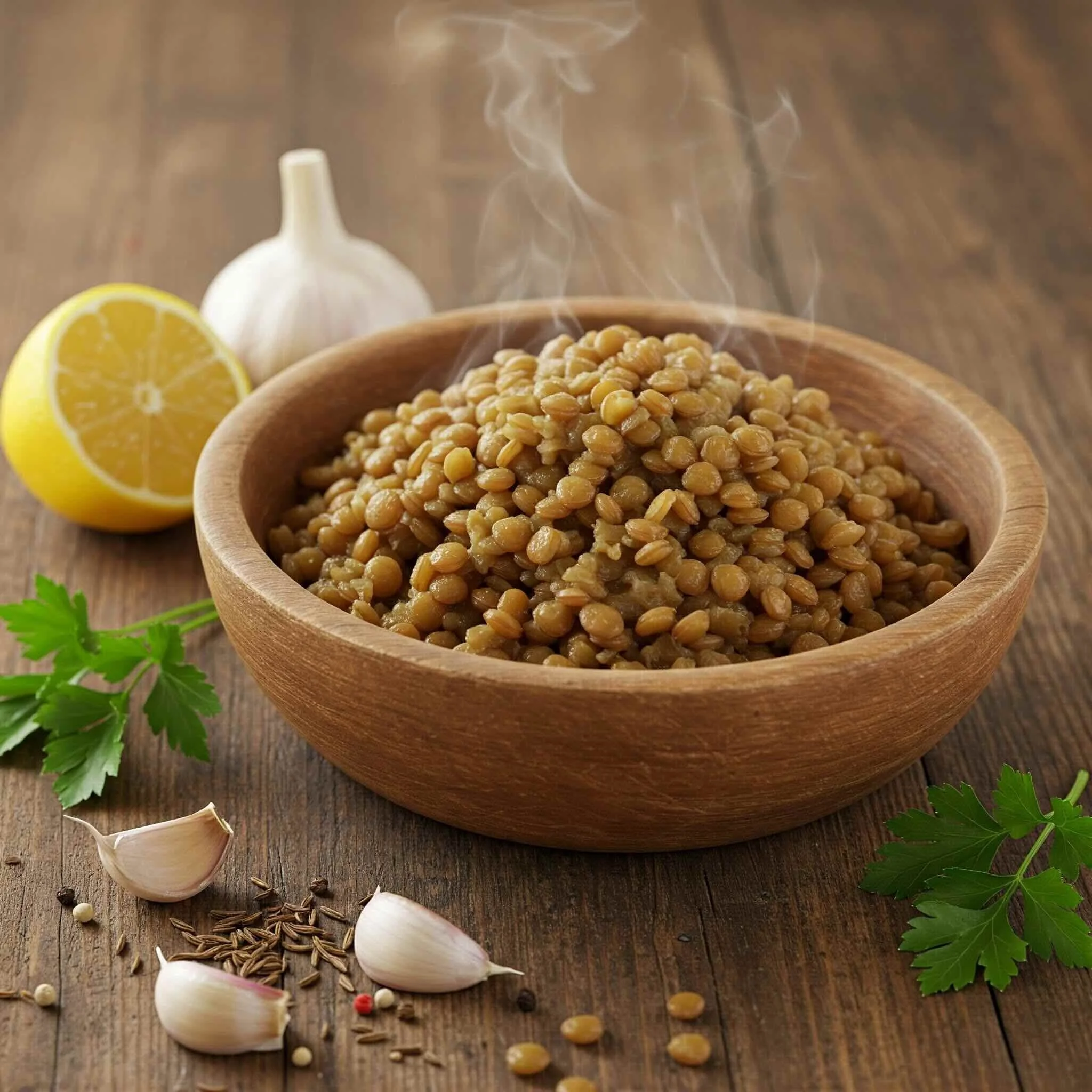Why the Humble Lentil Belongs in Every Plant-Based Kitchen
They may not be flashy. They don’t go viral. But lentils? They’ve powered entire civilisations. They nourish the soil. They warm the pot. They deliver comfort, depth, and nutrition in every spoonful — if we know how to unlock them.
This is your flavour-forward guide to the legume that deserves a front-row spot in your kitchen.
🌍 A Tiny Legume With a Global Story
Lentils have been cultivated for over 8,000 years, with roots stretching from South Asia to the Middle East, the Mediterranean, and East Africa. They're not just nutritious — they're cultural.
Here’s a taste of their global diversity:
India: Tadka dal — where split lentils are simmered into creamy comfort, then awakened with a sizzling tempering of cumin, garlic, mustard seeds, and chilli oil.
Ethiopia: Misir wot — red lentils stewed in a spiced berbere sauce and enriched with nitre kibbeh (a fragrant spiced oil, often veganised).
Sri Lanka: Parippu curry — red lentils cooked with pandan, curry leaves, turmeric, coconut milk, and sometimes cinnamon.
France: Puy lentils — firm and peppery, tossed in vinaigrettes or folded into warm salads.
Middle East: Mujaddara — a simple, hearty dish of lentils, rice, and caramelised onions — deeply savoury and beloved across the region.
These aren’t side dishes. They’re stars.
🍛 Know Your Lentils, Know Your Texture
Different lentils serve different purposes. Choose your type wisely:
Red Lentils: Quick-cooking, great for creamy dals and soups. They fall apart easily — ideal for stews.
Brown & Green Lentils: Mild, earthy, and hold their shape. Great in shepherd’s pies, loaves, or veggie burgers.
Beluga (Black) Lentils: Tiny, glossy, and firm. Excellent in salads or with rich sauces.
Puy Lentils (French): Distinct peppery flavour. Best for salads or slow-roasted vegetable pairings.
So if your lentils turn mushy in a salad or stay too firm in a soup, it’s probably a mismatch, not your cooking.
🧄 Layer the Flavour: Lentils Love Seasoning
By themselves, lentils are mild. But they’re sponges for flavour. Here’s how to help them shine:
Start with Aromatics: Onion, garlic, ginger, shallots — sautéed until golden.
Spices Are Essential: Cumin, coriander, turmeric, paprika, or spice blends like berbere, ras el hanout, or curry powders.
Add Fat: Olive oil, coconut milk, spiced ghee, or sesame oil boost mouthfeel and richness.
Don’t Forget Acid: A squeeze of lemon, vinegar, or a spoonful of tomato paste brings balance.
Umami Boosters: Miso, soy sauce, mushrooms, or sun-dried tomatoes add depth.
Let it simmer, let it sizzle, let it shine.
🔥 How to Cook Them Right (Without Getting Bored)
Soaking? Optional — Lentils cook quickly and don’t require soaking, but soaking can improve digestion and reduce antinutrients like phytic acid.
Salt? Safe Early On — Unlike older myths, adding salt at the beginning of cooking doesn’t toughen lentils and can help them cook more evenly.
Liquid Matters — Simmer lentils in vegetable stock, spiced water, or coconut milk instead of plain water.
Simmer Gently — Avoid boiling them to death. Keep it gentle for even texture.
🍴 Unexpected Ways to Use Lentils
You don’t need to stick to stews. Try:
Masoor vada (India): Deep-fried lentil fritters, crisp on the outside, fluffy within.
Lentil loaves or burgers: Combine with oats, nuts, and spices.
Smoky soups: Add smoked paprika or chipotle.
Lentil ragu: Use brown or green lentils in place of mince.
Roasted lentils: Crunchy snack or salad topper — toss with oil and bake until crisp.
🌱 Nutrition Meets Sustainability
Lentils are protein-packed (about 9g per 100g cooked) and rich in fibre, iron, folate, and polyphenols. However:
They’re low in methionine, so pair them with grains (like rice or bread) for complete protein.
They contain non-heme iron, which is less bioavailable — pair with vitamin C-rich foods (like tomato, lemon, capsicum) to improve absorption.
Soaking or sprouting can reduce phytates, boosting nutrient uptake.
From a planet perspective, lentils are stars:
Fix nitrogen into the soil, reducing fertiliser needs.
Use minimal water.
Produce very low greenhouse gas emissions.
Lentils nourish the land as they nourish us.
🥄 Final Word: A Legacy Worth Rediscovering
Lentils aren’t peasant food. They’re power food — humble only in appearance, mighty in every other way.
They remind us that flavour doesn’t need fanfare. It needs care. And time. And spice.
Sometimes, the biggest flavour comes from the smallest seed.

